Smell of odors
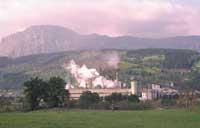
Everyone who lives by a trash can knows what the bad smell is. Or who lives next to a slaughterhouse, or lives next to the market, or anyone who passes behind the restaurant's kitchen. According to the study carried out by the Labein Foundation and the Association APESA (Association Pôle Environnement Sud Aquitaine) on the partial subsidy of the Aquitania-Euskadi Cooperation Fund, in the Autonomous Community of the Basque Country and Aquitaine there are seven important industrial sectors to analyze: the paper and wood sector, the chemical industry, the metalworking industry, the industry In many regions of the ACBC and Aquitaine there is a high degree of industrialization and a high number of odour generating activities (see table).
INDUSTRIAL ACTIVITY | OLOROUS COMPOUNDS EMITTED |
Carpentry Shop Carpentry Shop | Phenolic compounds, turpentine... which occur during the degradation of lignin and resin. |
Paper industry | Compounds containing sulfur and nitrogen |
Chemical industry Chemical industry | In addition to the specific product according to specific activity, sulfuric acid, ammonia and sulfur dioxide |
Metallurgy and metallurgy | In the casting process, high-odour resins are generated. |
Plastic industry Plastic industry | Aromatic solvents, mainly styrene. Many solvents are mutagens |
Agricultural/food industry | Sulfur and nitrogenous compounds mainly |
Waste treatment of waste | Landfill waste; EDAR sludge |
“Society is increasingly concerned about smell and as people become aware of the problem is going to come out,” explains Oscar Santa Coloma de Labein. Oscar Santa Coloma, head of the Air Department of the Environmental and Construction Unit of Labein, began working on the problem of smell about four years ago. Labein is a pioneer in this field in the Autonomous Community of the Basque Country and in this case has advanced the legislation. In fact, the existing environmental legislation in Spain dates back to the 1970s, and although odors appear in the list of atmospheric pollutants, in the developments of the current legislation are not treated or regulated. In France, for its part, odors are contemplated in the legislation and there are specific rules for certain activities that give off odour.

However, the odors group of the European Standardization Commission is preparing a standard that defines how odors should be measured and is very likely to be in force by the end of the year. In fact, Oscar Santa Coloma is one of the members of this group and believes that the norm will be a great advance. “It is necessary, important and interesting to have a standardized way of measuring, but we also consider the creation of a law fundamental, since if there are complaints we must specify how to treat them.”
Subjective and variable
Odors are due to the presence of molecules of various origins in the form of gases and, although in most cases they are in very low concentrations, they are able to excite the human smell. Our odors are combinations of pure volatile substances. For example, in the formation of the smell of strawberries, 35 chemicals and more than 100 are involved in the smell of coffee. Through a process that is not yet well known, these molecules excite our olfactory nerve and create a concrete feeling. In turn, each person receives the smell of his or her way, since it is a relative and subjective concept. The daily rhythm, diseases, fatigue, age, hormones... can change the smell sensation.
In general, odour contamination is produced by molecules with high electronic density nuclei, such as amines, sulphides, mercaptan and unsaturated hydrocarbons. Within the functional groups, aromatic compounds can be divided into four large families: compounds containing sulphur (H2S, mercaptanes, sulphides and disulfiides), compounds containing nitrogen (ammonia and amines), aldehydes and ketones, and finally organic acids.
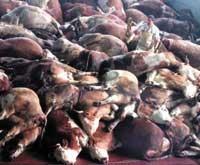
The compounds containing nitrogen and sulfur come mainly from the decomposition of proteins and amino acids. Both ketones and aldehydes, in case of carbohydrate fermentation or thermal decomposition of organic and fat products. When organic products are broken down in anaerobic state, acetic acid, hydrogen sulfide, ammonia, etc. They are created.
Each of these compounds has its smell, but when they appear together it does not have to give the sum of odors. Sometimes a smell covers another or one strengthens another. Each compound separately and jointly does not give the same smell, so odors cannot be investigated only by chemical analysis. Likewise, the smell follows the law of Stevens, that is, there is no proportionality between the intensity and concentration of the chemical compounds that produce it. For this reason, it has had to look for a special method to measure the smell.
How is the smell measured?
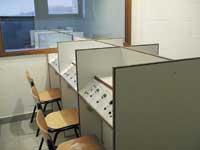
“The smell is measured analytically and oily. On the one hand, gas chromatography and mass spectrometry identify the components of the sample and calculate their concentrations. On the other hand, a team of experts composed of at least 6 people smelled the sample, hence the olfactometry and its intensity is calculated.” The smell is therefore measured with odour tasters. The sample to smell is diluted several times until reaching the threshold of smell perception, that is, until it is not smelled. The odour intensity is obtained according to the number of dilutions of the sample, being the intensity the number of dilutions made with pure air. Odour intensity is expressed in odour units per m3, a value used to determine if there is odour contamination in a place. Normally two thresholds of perception are defined: 50% of experts perceive smell and 100% smell. The first of the analyses is used.
Both measures are complementary, olfactometry provides information on the intensity and impact of the smell and the analysis serves to determine which system of purification should be installed in the source of the smell, since depending on the components of the smell and the source of contamination (fireplace, landfill, water, etc.) A method of purification will be more appropriate. However, although the only way to treat odors is by treating chemical compounds that produce the smell, it is not always enough. Sometimes, although the purification manages to reduce the concentration of compounds considerably, the smell persists.
Sampling and modeling
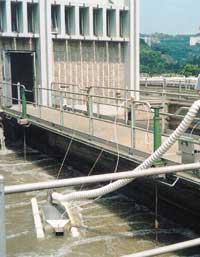
Research into a bad smell begins by identifying the sources of smell. For this purpose, the possible sources are identified and the sampling plan is implemented. Then the representative sample will be taken. It is essential to take the sample directly from the source to avoid confusion with the ambient air. The sample is collected in special bags made of inert materials and toilets. At one end it becomes empty and from the other the sample is collected, in short the contaminated air. Subsequently, as mentioned above, chemical analyses and olfactometry are performed, and the odour flow emitted by the source over time is calculated. Then the modeling is done.
Oscar Santa Coloma has indicated that modeling is the most complicated part of the whole analysis. “We must calculate how odors spread to the environment, how far they arrive and how the dispersion occurs. For this purpose, the data are introduced in a mathematical model and odour maps are made. The characteristics of the source and the topographic and meteorological data of the region are taken and applied to the model. The models provide us with local smell units and we can know where the smell pollution is and where it is not.” The orography of the region, the direction of the wind, the solar radiation, etc. They condition very much the dispersion of the smell and modeling is fundamental in any analysis of smell contamination. With all this information, it is only necessary to define the most appropriate method of debugging and take measures.
You can do two things, improve the process, or launch debugging techniques. In general, odors are recovered or eliminated. Recovery is mainly done by absorption and adsorption and, in some cases, by condensation. By cooling, alcohols, aldehydes and other substances are transformed into liquids that can be recovered and recycled. However, depending on the solvent you want to recover and the cleaning rate you want to obtain, sometimes it will be necessary to use liquid nitrogen. Among the elimination processes, the oxidation or thermal incineration and biopurification are highlighted. Oxidation is very suitable for the treatment of complex mixtures of pollutants and for the recovery of energy, but if the effluent contains sulfur, nitrogen, chlorine or fluorine can form dangerous products. In the biopurification the contaminants are degraded by microorganisms.
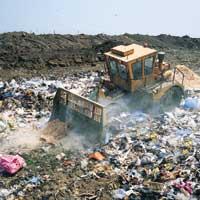
These methods are very appropriate when sources are closed, but are not effective in EDAR or landfills. In these cases, neutralizers are the most appropriate. “Next to the active area of a landfill is a neutralizing barrier,” explains Oscar Santa Coloma, “the barrier pours the neutralizer in the form of an aerosol, which reacts with aromatic molecules and turns them into odorless molecules. It is a very good method, but when the surface is large it can be expensive. Therefore, it is proposed to place barriers that will be activated according to the direction of the wind. They are in Italy and have given very good results, but it has not yet been done in landfills here.” And it is that society is not aware that the smell is not only annoying but also pollution. The problem of smell is addressed in a transversal way in Hego Euskal Herria through projects of measurement and improvement of the air quality, but it does not seem sufficient in the short term.





